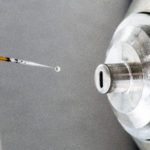Lien vers Pubmed [PMID] – 32812765
Lien DOI – 10.1021/jasms.0c00036
J Am Soc Mass Spectrom 2020 Sep; 31(9): 1783-1802
The Consortium for Top-Down Proteomics (www.topdownproteomics.org) launched the present study to assess the current state of top-down mass spectrometry (TD MS) and middle-down mass spectrometry (MD MS) for characterizing monoclonal antibody (mAb) primary structures, including their modifications. To meet the needs of the rapidly growing therapeutic antibody market, it is important to develop analytical strategies to characterize the heterogeneity of a therapeutic product’s primary structure accurately and reproducibly. The major objective of the present study is to determine whether current TD/MD MS technologies and protocols can add value to the more commonly employed bottom-up (BU) approaches with regard to confirming protein integrity, sequencing variable domains, avoiding artifacts, and revealing modifications and their locations. We also aim to gather information on the common TD/MD MS methods and practices in the field. A panel of three mAbs was selected and centrally provided to 20 laboratories worldwide for the analysis: Sigma mAb standard (SiLuLite), NIST mAb standard, and the therapeutic mAb Herceptin (trastuzumab). Various MS instrument platforms and ion dissociation techniques were employed. The present study confirms that TD/MD MS tools are available in laboratories worldwide and provide complementary information to the BU approach that can be crucial for comprehensive mAb characterization. The current limitations, as well as possible solutions to overcome them, are also outlined. A primary limitation revealed by the results of the present study is that the expert knowledge in both experiment and data analysis is indispensable to practice TD/MD MS.


